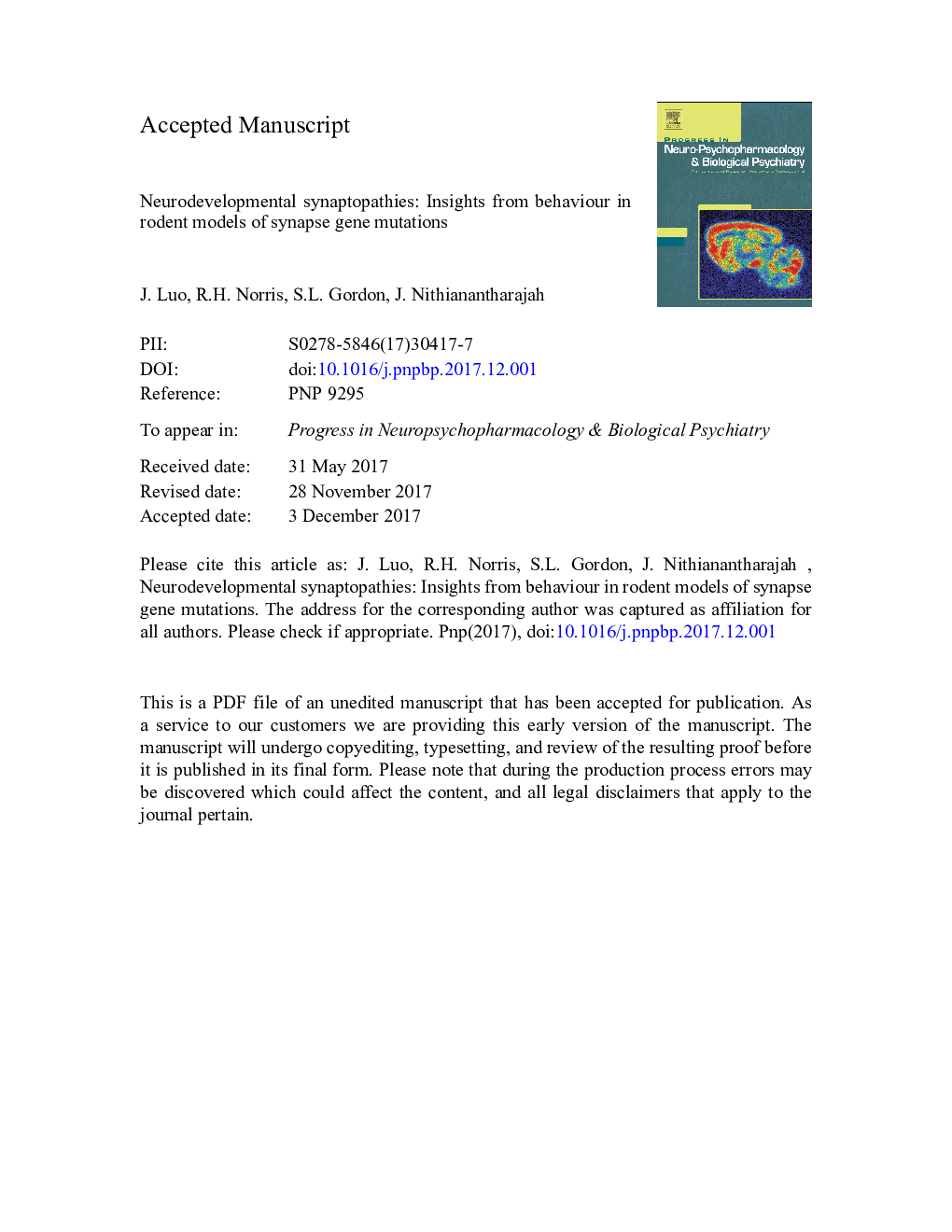| Article ID | Journal | Published Year | Pages | File Type |
|---|---|---|---|---|
| 8537290 | Progress in Neuro-Psychopharmacology and Biological Psychiatry | 2018 | 49 Pages |
Abstract
The genomic revolution has begun to unveil the enormous complexity and heterogeneity of the genetic basis of neurodevelopmental disorders such as such epilepsy, intellectual disability, autism spectrum disorder and schizophrenia. Increasingly, human mutations in synapse genes are being identified across these disorders. These neurodevelopmental synaptopathies highlight synaptic homeostasis pathways as a convergence point underlying disease mechanisms. Here, we review some of the key pre- and postsynaptic genes in which penetrant human mutations have been identified in neurodevelopmental disorders for which genetic rodent models have been generated. Specifically, we focus on the main behavioural phenotypes that have been documented in these animal models, to consolidate our current understanding of how synapse genes regulate key behavioural and cognitive domains. These studies provide insights into better understanding the basis of the overlapping genetic and cognitive heterogeneity observed in neurodevelopmental disorders.
Keywords
GTPMAGI-1SAPAPNRXNNLGNsynaptosomal-associated protein-25Dnm1S-SCAMSyt1STXBP1PRRT2Synaptotagmin 1SV2ASYPDLGSNAP25PSDNSFPTZmembrane-associated guanylate kinaseNeuroliginMAGUKAutism spectrum disorderSchizophreniaEpilepsyPost-synaptic densityBehavioursyntaxinSybSynaptobrevinSynaptophysinsynapsinSynShankSAPN-ethylmaleimide-sensitive factorMouse modelsintellectual disabilityneurexinsynapse-associated proteinpentylenetetrazolguanosine 5′-triphosphate
Related Topics
Life Sciences
Neuroscience
Biological Psychiatry
Authors
J. Luo, R.H. Norris, S.L. Gordon, J. Nithianantharajah,
